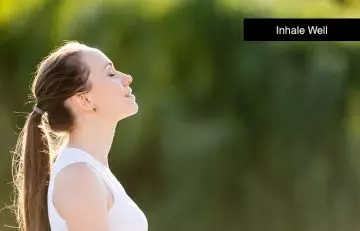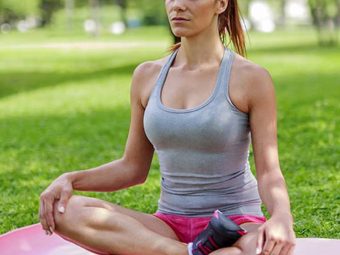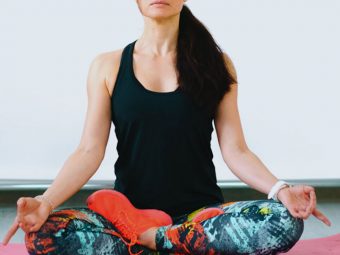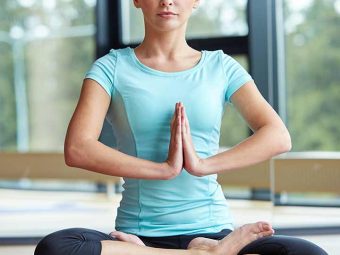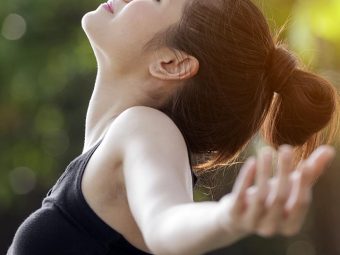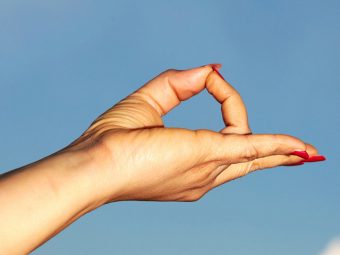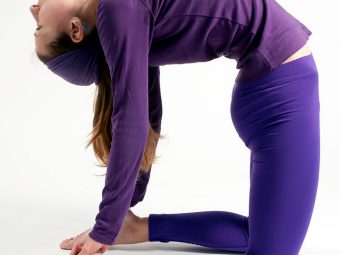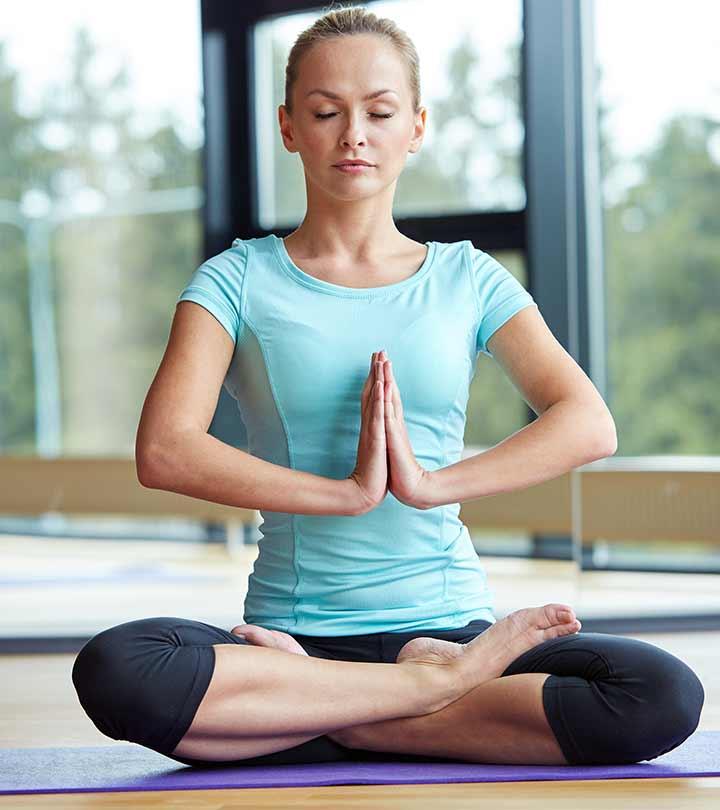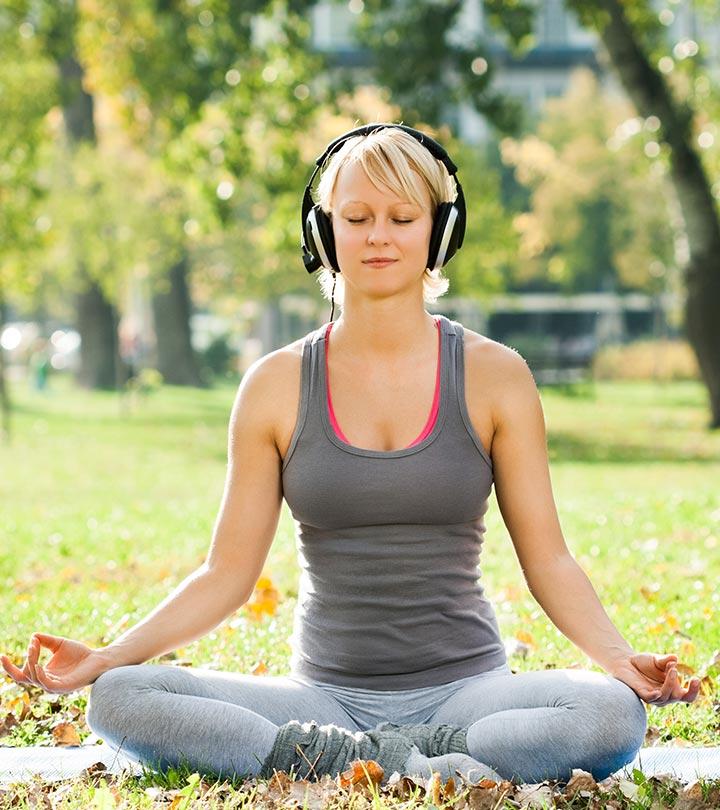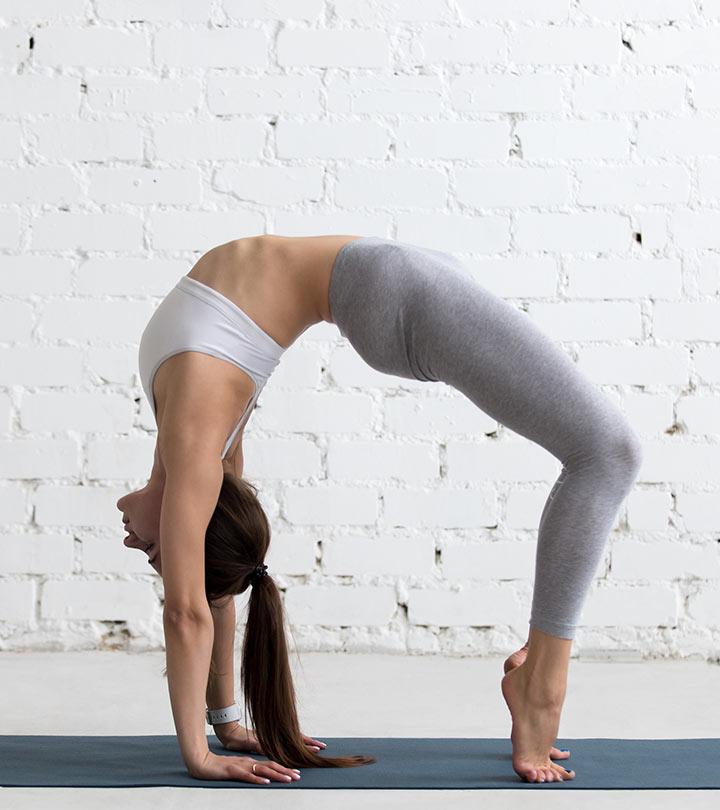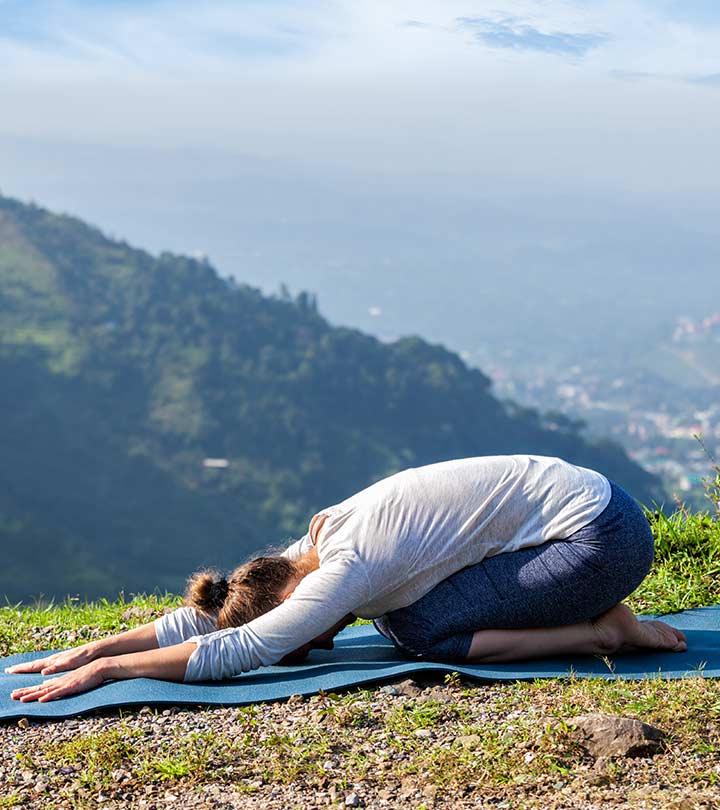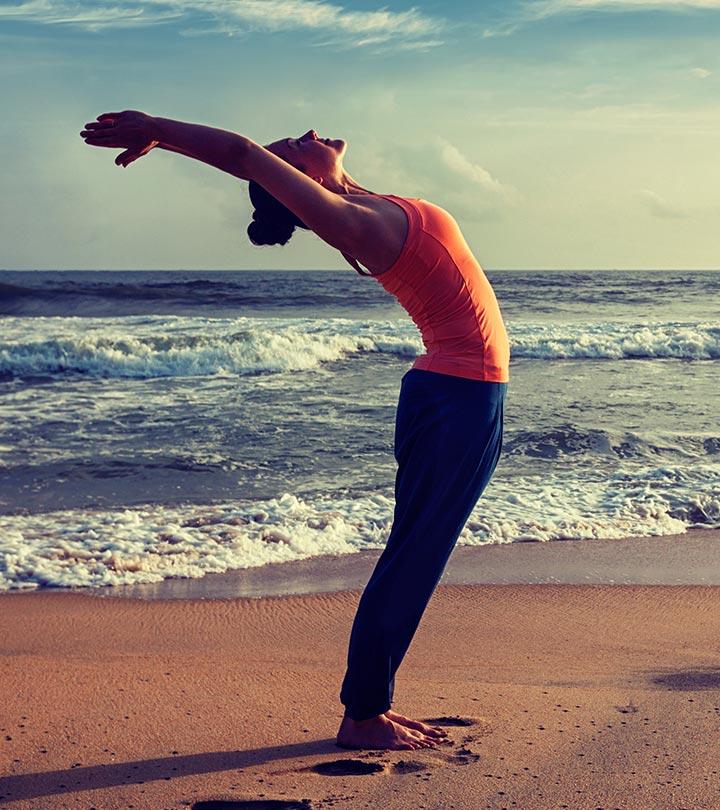How To Do Kapalbhati Pranayama And What Are Its Benefits?
This ancient breathing technique can transform your physical and mental well-being!

Image: Shutterstock
The benefits of kapalbhati pranayama are surely breathtaking. After a busy day at work, coupled with pollution and heat, you become weak and lifeless. This age-old breathing technique can help you get your energies back, attain balance, and detoxify yourself. So, what is this technique all about? And how do you do it? In this article, we answer these queries and look into the benefits and types of kapalbhati pranayama. Take a look!
 Trivia
TriviaIt is believed that Kapalbhati Pranayama awakens Kundalini power, a ruling power found near the Muladhara Chakra around your lower abdomen.
In This Article
What Is Kapalbhati Pranayama?
Long long ago, a set of breathing techniques were devised to help people with their overall well-being. It is called the yogic breath, and it is an important aspect of yoga. Kapalbhati Pranayama is one among them, and it has been keeping people healthy and pure since ages.
A study analyzed the data obtained from the 2017 National Health Interview Survey, which involved 61,267 Americans. In 2017, the percentage of individuals who had engaged in yoga within the past 12 months was reported to be 13.3%, while 7.0% had incorporated yogic breathing and meditation into their routine.
The study also found that individuals between the ages of 50 and 64 were more likely to practice YoBaM (Yoga, Breathing, and Meditation) compared to those aged 29 or younger. Additionally, females, Hispanics, and individuals experiencing mild to severe psychological distress showed a higher likelihood of incorporating YoBaM as part of their yoga practice.
‘Kapal’ means forehead, ‘Bhati’ means shining, and ‘Pranayama’ means breathing technique. Kapalbhati Pranayama is a Sanskrit word that means forehead shining breathing technique. It is named so as the regular practice of the method gives you a shining forehead and bright intellect.
Though the method appears to need minimal effort, in reality, it is a very technical kriya and comes with a plethora of benefits. It is a ‘shat’ kriya technique that flushes out toxic air from your body, cleansing it in the process. With cleansing come various mental and physical benefits. Kapalbhati requires you to sit in a yogic posture and breathe. It is more of a breathing exercise than assuming a pose with the help of your limbs. It is part of the Eight Limbs Of Yoga as compiled in Yoga Sutras by Sage Patanjali. Practicing Kapalbhati yoga keeps you healthy in mind, body, and spirit and promotes overall wellness.
Now that we know the unique nature of Kapalbhati, let’s find out how to practice it.
How To Do Kapalbhati
To learn how to do Kapalbhati, keep the following steps in mind:
1. Sit The Right Way
Sit comfortably in Sukhasana or the Easy Pose. Place your palms on your knees. Ensure they are facing upwards. Direct your focus and awareness to the belly region. It is beneficial if one sits on a folded blanket on a pair of yoga blocks so that the spine remains elevated and alert.
2. Inhale Well
Inhale deeply with both your nostrils, filling both your lungs with air. The breath should be a slow and steady intake of air, concentrating on the airflow and breathing in a calm manner.
3. Exhale Rapidly
Pull your stomach in towards your back. Get your navel closer to the spine as much as you can. Place your right hand on the navel to feel your abdominal muscles contracting. As you relax from the contraction, you exhale air in a short burst followed by an automatic inhalation. During exhalation, there will be a hissing sound. At that point, feel that all the bad in your body is coming out. As you release your abdomen, you can feel the air filling your lungs.
4. Relax Deeply
Inhale and exhale in this manner for about 20 times. That will be one round of Kapalbhati. Rest after you complete one round by sitting silently in Sukhasana with your eyes closed and observe the sensations erupting in your body.
Types Of Kapalbhati Pranayama
There are three types of Kapalbhati Pranayama. They are:
- Vatakrama Kapalbhati – This is the kind we discussed above, where the exhalation is active, and the inhalation is passive.
- Vyutkrama Kapalbhati – This type requires you to sniff in water through your nostrils, let it flow down your mouth, and eventually spit it out through your lips.
- Sheetkrama Kapalbhati – This is the opposite of Vyutkrama Kapalbhati, and it requires you to take in water from the mouth and expel it through your nostrils.
Benefits Of Kapalbhati Pranayama
Kapalbhati benefits your body, mind, and soul in several ways. Here are some of its advantages:
- Kapalbhati generates heat in your body and thus helps in the process of detoxification by dissolving toxins and other waste matter.
- It improves the functioning of the kidneys and liver.
- It removes stress from the eyes and erases dark circles.
- It enhances blood circulation and digestion.
- The method increases your immunity, metabolic rate, thus aiding rapid weight loss.
- It stimulates your abdominal organs and is thus helpful for diabetic patients.
- It rejuvenates your brain and energizes your nerves.
- The process calms you and uplifts your mind.
- It gives you a sense of balance and sensibility, improves mindfulness, and makes you feel pure and clutter-free.
- It eliminates acidity and gas-related problems if done correctly. It is not recommended for people with gastric issues.
- Kapalbhati strengthens your lungs and increases their capacity.
40 healthy male students were divided into a control and test group to analyze the effect of yoga asanas and pranayama on health. During this study conducted over 6 weeks, the experimental group had a visible increase in breath-hold time. The difference between the mean of the pretest and posttest values was also high in the experimental group, indicating that yoga asanas and pranayama significantly impacted one’s health.
Tarun, a blogger, points out his preference for Kapalbhati pranayama. He states in one of his blog posts, “During the morning pranayama session, I used to start with paying more focus on Ujjayi and Kapalbhati pranayama, often extending its duration to 20-30 minutes each (i).” He adds, “This can serve as a tool for people who want to reduce obesity by regulating/increasing their metabolism if they feel that whatever they eat simply gets stored in their body.”
Role Of Pranayama And Yoga In Increasing Breath-Holding Time
Source: Effect of yoga asanas and pranayama on the health-related aspects of physical fitness- Regular practice of Kapalbhati will activate you and make your face glow radiantly.
- It improves memory and concentration power.
- The practice clears and activates the chakras in your body.
- It helps in curing asthma and sinus.
- It keeps depression at bay, helps with stress relief, and offers relaxation by filling you with positivity.
While there are many ways Kapalbhati pranayama benefits you, it may not work for everyone. In some cases, it may lead to harm as well.
Side Effects
- Kapalbhati may lead to hypertension and hernia.
- It can cause dizziness and headaches.
- You might feel a vomiting sensation.
- Your mouth can become dry.
- You might experience excessive perspiration and salivation.
Precautions
- Heart patients should go slow with their exhaling.
- Practice Kapalbhati in the morning on an empty stomach.
- Those with high blood pressure should reduce their rate of Kapalbhati.
- Learn Kapalbhati from a certified yoga teacher after getting a health check-up done.
- It is best to avoid this technique if you are pregnant or menstruating. Instead, you can practice meditation in such cases.
- Avoid Kapalbhati if you have a slipped disc or a stent.
- If you have ulcers, be careful while practicing Kapalbhati.
- Kapalbhati is an advanced breathing technique. Attempt it only after becoming proficient in the basic level pranayama.
- Keep in mind your limitations during the practice and work through the process accordingly.
- Be cautious and aware during the breathing exercise if you have respiratory issues like asthma.
 Quick Tip
Quick TipKapalbhati pranayam provides many health benefits. However, it may not be suitable for some people. Find out more in the next section.
Who Should Not Do Kapalbhati?
- Cardiovascular Diseases
People with cardiovascular conditions, especially those who underwent a heart surgery or had a heart attack recently, should avoid Kapalbhati due to the strain it puts on the cardiovascular system (1).
- Epilepsy
The rapid breathing and abdominal contractions in Kapalbhati may trigger seizures in some individuals with epilepsy. However, research is limited in this regard. If you have epilepsy or a history of seizures, avoid practicing this breathing technique.
Always consult a licensed yoga practitioner to get personalized advice and guidance for Kapalbhati to ensure you reap its benefits.
Now that we know the workings of the Kapalbhati, let’s find the answers to some of the commonly asked questions regarding it.
Infographic: Top 6 Reasons To Practice Kapalbhati Pranayama
Kapalbhati pranayama is an effective breathing practice that helps cleanse our sinuses and improve lung capacity. It cleanses our system from within and may also improve our overall health. Want to know how? Check out the infographic below to understand why you must include kapalbhati pranayama in your daily routine. Scroll down. Illustration: StyleCraze Design Team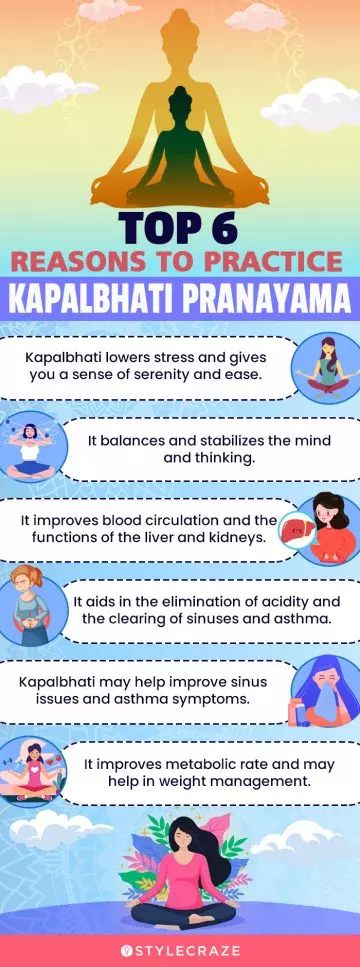
The benefits of Kapalbhati Pranayama are far-reaching. They range from removing the toxic air from the body to relaxing the mind, spirit, and body. This breathing technique is done in a yogic pose (Sukhasana), which sharpens your intellect and shines your forehead with practice. There are three types of Kapalbhati Pranayama. All may help improve kidney and liver functioning, eliminate dark circles, enhance physical fitness through increased metabolism, energize brain and nerves, uplift mood, etc. However, it has a few side effects, like hypertension, dizziness, headache, nausea, and more, so practice caution. It is better to consult a yoga expert before practicing this Pranayama.
Key Takeaways
- Kapalbhati Pranayama cleanses the respiratory system, thereby improving the capacity of the lungs.
- This breathing exercise increases the physical vitality, metabolic rate, which helps aid weight loss.
- It helps improve digestive system function and also relieves constipation.
- However, it may cause some side effects such as hypertension, vomiting sensation, and headaches.

Image: Stable Diffusion/StyleCraze Design Team
Frequently Asked Questions
Can we practice Kapalbhati Pranayama after a run?
Yes, you can practice Kapalbhati Pranayama either before or after a run. However, it is best to practice it first thing in the morning on an empty stomach so that it rejuvenates and prepares you for the rest of the day.
Can we eat immediately after practicing Kapalbhati Pranayama?
It best to wait for 20 to 30 minutes after a session of Kapalbhati Pranayama to prevent the energy generated from being used to digest food.
Does Kapalbhati reduce belly fat?
Yes, when practiced regularly, Kapalbhati may enhance digestion, gut health, and metabolism, thus helping to reduce belly fat to a certain extent.
How many times should I do Kapalbhati?
Beginners may do three rounds of the Kapalbhati, each lasting about 10 to 20 breaths, twice daily. You may gradually increase it to 30–40 breaths per round.
Is Kapalbhati good for ovarian cysts?
Kapalbhati may help manage metabolic syndromesi XA cluster of conditions found in people with abdominal obesity or hereditary diabetes leading to heart disease, stroke, and diabetes. and ovarian cysts (2). However, the efficacy of this method is yet to be proven and requires more research.
Does kapalbhati reduce creatinine level?
Yes. Studies found that practicing Kapalbhati for a minute could reduce creatininei XA byproduct of energy production in muscles which healthy kidneys filter from the blood and then excrete as waste in the urine. and tyrosinei XA nonessential amino acid made from phenylalanine (another amino acid) is key for producing proteins, enzymes, and muscle tissue. levels in healthy men (3).
Kapalbhati Pranayama is an ancient breathing technique that helps improve overall health and well-being. Explore the benefits and understand why this technique holds importance in the realm of pranayama by clicking on the video below.
Personal Experience: Source
StyleCraze's articles are interwoven with authentic personal narratives that provide depth and resonance to our content. Below are the sources of the personal accounts referenced in this article.
i. Yoga for Thyroid
https://yogaforcommonpeople.wordpress.com/
References
Articles on StyleCraze are backed by verified information from peer-reviewed and academic research papers, reputed organizations, research institutions, and medical associations to ensure accuracy and relevance. Read our editorial policy to learn more.
- Role of yoga in the management of premature ejaculation
https://www.ncbi.nlm.nih.gov/pmc/articles/PMC7502310/ - Kapalabhati pranayama: An answer to modern day polycystic ovarian syndrome and coexisting metabolic syndrome?
https://www.ncbi.nlm.nih.gov/pmc/articles/PMC4959327/ - Effect of Kapalabhati on blood urea, creatinine and tyrosine
https://pubmed.ncbi.nlm.nih.gov/2399804/







